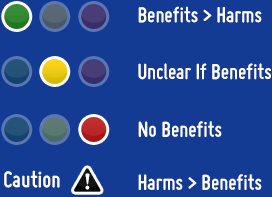 Here the NNT Group offers compelling research and specific answers.
Here the NNT Group offers compelling research and specific answers.
Narrative: The prostate is a kiwi-sized gland that secretes fluid into male semen. The cells of the prostate have a propensity to become cancerous: U.S. men have a 16% chance of being diagnosed with prostate CA in their lifetime and a 3% chance of dying from prostate cancer.1 Autopsy studies have shown that up to 2/3 of elderly men die with asymptomatic prostate cancer. It appears that if they live long enough most men will develop prostate cancer, though it will not affect their longevity. Given the high incidence of prostate cancer, there have been aggressive efforts to screen patients with the hopes of diagnosing local (non-metastatic) cancer that can be treated before it progresses. Elevated serum prostate-specific antigen (PSA) levels, a protein found in the prostate, are loosely correlated with prostate cancer. Routine PSA screening was widely adopted on the theory that tracking PSA levels would identify prostate cancer and save lives; broad screening therefore began in many Western countries without evidence from major randomized trials to support this theory. In the systematic review2 summarized here researchers pooled the data from 6 randomized controlled trials with a total of 387,286 patients (poorly designed trials were excluded). The studies randomized patients to screening with PSA versus no screening. Pre-defined outcomes of interest were: All cause mortality and death from prostate cancer, diagnosis of prostate cancer, effect of screening on stage at diagnosis, false positive and false negative results, harms of screening, quality of life, and cost effectiveness. All cause mortality and prostate cancer mortality were statistically unaffected by PSA screening. There were more cancers diagnosed in the PSA screened groups (6.4% versus 4.4%), suggesting a 2% difference (and a NNT of 50) for diagnosing a cancer in the absence of a mortality benefit. There was a slight increase in diagnosis of stage 1 and 2 prostate cancer, but no increase in the diagnosis of higher, or late stage (3, 4, and 5) prostate cancer. Many of the trials did not report complications or quality of life measures. One trial3 reported a complication rate of 0.7% for prostate biopsy including infection, bleeding, clot formation, and urinary difficulties. Another4 reported 76% of PSA ‘positives’ to be false positives, verified by subsequent prostate biopsy.
The ERSPC trial (182,160 men in 8 European countries) published updated follow-up data in 2012.4 This randomized controlled trial showed no overall mortality benefit to PSA testing but a reduction in prostate cancer mortality of 1.07 deaths per 1000 men enrolled. To prevent one death from prostate cancer, 1055 men would need to be screened and 37 cancers would need to be detected, however to reiterate, overall mortality was unaffected by screening.
Caveats: The quality of the mortality data in the systematic review was considered “moderate” by the GRADE approach (a method of grading the quality of the data; see The GRADE Working Group). The quality of the data for diagnosing cancer and effect of screening on stage of cancer was “low”, and there unfortunately remains no good data to answer whether PSA screening is useful for high-risk populations or persons. This review also did not address quality of life factors. Findings in the USPSTF review of these and other PSA data suggest significant increases in anxiety due to false positive PSA results. With false positive rates of 75% (other sources have similar or higher rates) it is clear that this is not a specific test. Most men who undergo prostate biopsy do so needlessly. Significant complications from biopsy are uncommon, though even at low incidence the high rate of screening ultimately means that thousands of men incur complications including bleeding and infection. In addition, financial costs and short term pain should not be overlooked, despite being untracked in these data. More concerning is the number of men who undergo unnecessary prostatectomy, a procedure known to be associated with long-term sequelae: erectile dysfunction (36%), urinary incontinence (28%), serious cardiovascular events (3%), vascular events (1-2%), and treatment-related mortality (0.5%).5
Why does detection of prostate cancer not lead to increased survival? This is not clear, but the data from this large review strongly argue against routine PSA screening in the asymptomatic man. The strategy of routinely screening all men with PSA tests leads to interventions that are not saving lives and may be causing harm. The USPSTF recommendation has stirred many partisans on both sides of the issue. 6,7 PSA supporters have criticized the USPSTF decision (faulting problems with the PLCO and ERSPC trials) and some have suggested complex modeling to better identify candidates for PSA screening. We at theNNT.com side with the large body of RCT evidence, the current gold standard, and agree with the USPSTF recommendation that PSA testing, as investigated in trials, is not beneficial. It seems that the position of the American Urological Association (AUA), a long time staunch supporter of routine PSA testing, is evolving in this direction as well,8 a change that we applaud.
Time and further evidence may identify a group of asymptomatic men who benefit from PSA screening, however at this time such a cohort has not been elucidated. Medical providers who continue to use the PSA test should ensure that their patients understand the risk/benefit of the test through shared decision-making, a position that the AUA has moved toward as well.
Author: Joshua Quaas, MD
Published/Updated: May 23, 2013
If you’re willing to fight for Main Street America, click here to sign up for my free weekly email.





